Papers by Anna Kjellström
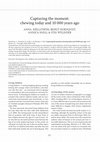
Living children Living children – crawling, laughing, playing, working, looking after younger sis... more Living children Living children – crawling, laughing, playing, working, looking after younger sisters and brothers, and whatever else they did – are notoriously hard to glimpse in archaeological data from prehistoric and early historical times. Archaeological children are usually associated with contexts related to death, and are excavated from burial grounds and churchyards, or were sacrificed and later excavated from various ritual sites (cf. Swedish examples: Johnsen & Welinder 1995, Welinder 1998). We have previously discussed living children from the time when they lost their milk teeth (Kjellstrom et al. 2009). The starting point was the extraordinary find of seventeen milk teeth from at least three or four children between the ages of 5 and 10 years. After they fell out, the teeth had been stuck between the logs of an early modern log house. In this article, we will again use teeth, but now to discuss another aspect of the lives of children both before and after they lost the...
At the end of the 10th century the first Swedish town Sigtuna was founded, which can be recognize... more At the end of the 10th century the first Swedish town Sigtuna was founded, which can be recognized as the beginning of urbanization in the Malaren valley. Christianity was growing strong and the ad ...

International Journal of Osteoarchaeology, 2021
This study aims to promote consistent observations of sacralization, a relatively common form of ... more This study aims to promote consistent observations of sacralization, a relatively common form of lumbosacral transitional vertebrae (LSTV). Sacralization can inform on genetic affiliation. There are four types, ranging from enlarged transverse processes to bony ankylosis. Complete sacralization reportedly occurs in 1.5%‐14% of archaeological and modern populations, yet clinical studies can conflate types, resulting in rates as high as 46%. Archaeologically obtained sacra and lower lumbar vertebrae from two historical shipwrecks (16th century English warship Mary Rose and 17th century Swedish warship Kronan), are compared via gross observation. These semi‐documented individuals, fit enough to be on a warship during battle, have a documented cause, manner, and date of death. The assemblages yield 120 sacra; complete sacralization is compared between the crews. Both crude and true prevalence of bony ankyloses are recorded with chi‐square analyses testing significance. Both samples have...
Though relics have attracted immense interest from a variety of scholars, not much attention has ... more Though relics have attracted immense interest from a variety of scholars, not much attention has been paid to the practical handling of the holy corporal remains. Here, with the aim of better under ...

European Journal of Archaeology
Previous research has shown that physical violence had a normative presence in medieval Nordic so... more Previous research has shown that physical violence had a normative presence in medieval Nordic societies. In this study, weapon-related trauma (WRT) was examined in human skeletal assemblages from two religious houses, Skriðuklaustur in Iceland, and Västerås in Sweden. The aims were to identify patterns of WRT and to relate these to the masculinities of different groups of men. Violence was a prominent component of identity among lay men, especially for men with warrior experience. The use of violence was more problematic among clerics. The hypothesis that these notions of ideal masculine behaviour would affect the ways in which masculinities were enacted and would be reflected in the patterns of WRT was borne out by the results of this study. No WRT was identified among the canons and lay brothers in Skriðuklaustur, but it was present in about thirty per cent of the males interpreted as belonging to the lay elite buried in the northern part of the church at Västerås.

Opuscula. Annual of the Swedish Institutes at Athens and Rome
In 2016, archaeological excavations undertaken by the Ephorate of Antiquities of West Attica, Pir... more In 2016, archaeological excavations undertaken by the Ephorate of Antiquities of West Attica, Piraeus and Islands 3.8 km south-west of Athens, Greece, revealed mass burials of 79 skeletons in three rows. The burials are dated to the 7th century BC. The anthropological field documentation was undertaken by The Swedish Institute of Athens, and followed established bioarchaeological protocols regarding taphonomic processes, age, sex, injuries, and pathological changes. The descriptions and interpretations should be regarded as preliminary field observations. A majority of the individuals were young adult or juvenile males, most of them without signs of active disease and with a generally good oral health status, but with corroded iron shackles around their wrists. Cause of death could not be determined although extensive and likely perimortem fractures were observed. The only object related to injury and/or possible cause of death was an arrowhead found in the chest of one of the skele...

Forensic Science International: Genetics
In 1998, a Viking Age mass grave was discovered and excavated at St. Laurence´s churchyard in Sig... more In 1998, a Viking Age mass grave was discovered and excavated at St. Laurence´s churchyard in Sigtuna, Sweden. The excavated bones underwent osteoarchaeological analysis and were assigned to at least 19 individuals. Eleven skeletons showed sharp force trauma from bladed weapons. Mass graves are an unusual finding from this time period, making the burial context extraordinary. To investigate a possible maternal kinship among the individuals, bones and teeth from the skeletal remains were selected for mitochondrial DNA (mtDNA) analysis. Sanger sequencing of short stretches of the hypervariable segments I and II (HVS-I and HVS-II) was performed. A subset of the samples was also analysed by massively parallel sequencing analysis (MPS) of the entire mtDNA genome using the Precision ID mtDNA Whole Genome Panel. A total of 15 unique and three shared mtDNA profiles were obtained. Based on a combination of genetic and archaeological data, we conclude that a minimum of 20 individuals was buried in the mass grave. The majority of the individuals were not maternally related. However, two possible pairs of siblings or mother-child relationships were identified. All individuals were assigned to West Eurasian haplogroups, with a predominance of haplogroup H. Although the remains showed an advanced level of DNA degradation, the combined use of Sanger sequencing and MPS with the Precision ID mtDNA Whole Genome Panel revealed at least partial mtDNA data for all samples.
Antiquity
The warrior woman has long been part of the Viking image, with a pedigree that extends from the V... more The warrior woman has long been part of the Viking image, with a pedigree that extends from the Valkyries of Old Norse prose and poetry to modern media entertainment. Until recently, however, actual Viking Age evidence for such individuals has been sparse. This article addresses research showing that the individual buried at Birka in an 'archetypal' high-status warrior grave-always assumed to be male since its excavation in 1878-is, in fact, biologically female. Publication, in 2017, of the genomic data led to unprecedented public debate about this individual. Here, the authors address in detail the interpretation of the burial, discussing source-critical issues and parallels.
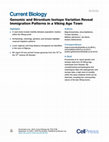
Current biology : CB, Jan 10, 2018
The impact of human mobility on the northern European urban populations during the Viking and Ear... more The impact of human mobility on the northern European urban populations during the Viking and Early Middle Ages and its repercussions in Scandinavia itself are still largely unexplored. Our study of the demographics in the final phase of the Viking era is the first comprehensive multidisciplinary investigation that includes genetics, isotopes, archaeology, and osteology on a larger scale. This early Christian dataset is particularly important as the earlier common pagan burial tradition during the Iron Age was cremation, hindering large-scale DNA analyses. We present genome-wide sequence data from 23 individuals from the 10 to 12 century Swedish town of Sigtuna. The data revealed high genetic diversity among the early urban residents. The observed variation exceeds the genetic diversity in distinct modern-day and Iron Age groups of central and northern Europe. Strontium isotope data suggest mixed local and non-local origin of the townspeople. Our results uncover the social system un...
Kulturelle und biologische Perspektiven, 2012
The Routledge Handbook of the Bioarchaeology of Human Conflict, 2008
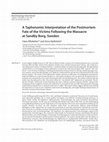
Bioarchaeology Interntional, 2020
In the ringfort Sandby borg (A.D. 400–550) on Öland, Sweden, remains of 26 unburied humans were e... more In the ringfort Sandby borg (A.D. 400–550) on Öland, Sweden, remains of 26 unburied humans were excavated between 2010 and 2016. Several of the skeletons display traces of lethal interpersonal violence. This study presents taphonomic analyses of unburied bodies, a situation seldom encountered archaeologically. The depositional context allows us to investigate human taphonomy in interaction with natural agents both “indoors” and “outdoors.” A set of various techniques, including documentation of preservation via zoning, weathering stages, fracture analysis, and archaeothanatology, were applied to understand the perimortem and postmortem fate of the human remains. The results of the taphonomic analysis showed no indications of manipulation postmortem. Expected differences in preservation between in- and outdoor skeletons were not observed. Perimortem fire alterations were interpreted as the result of burning hearths and smoldering roofs. The analysis indicates that the bodies have decomposed in voids. New observations for “unconfined void” taphonomy are presented. The abduction of limbs could be the result of bloating and, hence, indicate a primary deposit of bodies. Atypical lack of splaying of bones might be caused by decomposition in unconfined voids, possibly allowing quicker drainage of putrefaction liquids than in confined voids such as coffins. These observations suggest that processes behind decomposition in voids are not completely understood archaeologically, and might challenge interpretations of mortuary treatment from human remains.

European Journal of Archaeology, 2018
During excavations of the Iron Age ringfort of Sandby borg (AD 400-550), the remains of twenty-si... more During excavations of the Iron Age ringfort of Sandby borg (AD 400-550), the remains of twenty-six unburied bodies were encountered inside and outside the buildings. The skeletons and the archaeological record indicate that after the individuals had died the ringfort was deserted. An osteological investigation and trauma analysis were conducted according to standard anthropological protocols. The osteological analysis identified only men, but individuals of all ages were represented. Eight individuals (31 per cent) showed evidence of perimortem trauma that was sharp, blunt, and penetrating, consistent with interper-sonal violence. The location of the bodies and the trauma pattern appear to indicate a massacre rather than a battle. The 'efficient trauma' distribution (i.e. minimal but effective violence), the fact that the bodies were not manipulated, combined with the archaeological context, suggest that the perpetrators were numerous and that the assault was carried out effectively. The contemporary sociopolitical situation was seemingly turbulent and the suggested motive behind the massacre was to gain power and control.
The socio-cultural behaviour of Scandina-vian Mesolithic hunter-gatherers has been difficult to u... more The socio-cultural behaviour of Scandina-vian Mesolithic hunter-gatherers has been difficult to understand due to the dearth of sites thus far investigated. Recent excavations at Kanaljorden in Sweden, however, have revealed disarticulated human crania intentionally placed at the bottom of a former lake. The adult crania exhibited antemortem blunt force trauma patterns differentiated by sex that were probably the result of interpersonal violence; the remains of wooden stakes were recovered inside two crania, indicating that they had been mounted. Taphonomic factors suggest that the human bodies were manipulated prior to deposition. This unique site challenges our understanding of the handling of the dead during the European Mesolithic.
Though relics have attracted immense interest from a variety of scholars, not much attention has ... more Though relics have attracted immense interest from a variety of scholars, not much attention has been paid to the practical handling of the holy corporal remains. Here, with the aim of better understanding the treatment of the bodies and relics as physical objects in Sweden during the Middle Ages, osseous materials from three different contexts were osteo-logically analysed. The investigation offers detailed insight into the treatment of the bones and makes it possible to distinguish three physical phases of the cult of relics. The three phases demonstrate the utilitarian administration of the bones and the fortitude of belief.
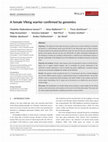
Objectives: The objective of this study has been to confirm the sex and the affinity of an indivi... more Objectives: The objective of this study has been to confirm the sex and the affinity of an individual buried in a well-furnished warrior grave (Bj 581) in the Viking Age town of Birka, Sweden. Previously, based on the material and historical records, the male sex has been associated with the gender of the warrior and such was the case with Bj 581. An earlier osteological classification of the individual as female was considered controversial in a historical and archaeological context. A genomic confirmation of the biological sex of the individual was considered necessary to solve the issue. Materials and methods: Genome-wide sequence data was generated in order to confirm the biological sex, to support skeletal integrity, and to investigate the genetic relationship of the individual to ancient individuals as well as modern-day groups. Additionally, a strontium isotope analysis was conducted to highlight the mobility of the individual.

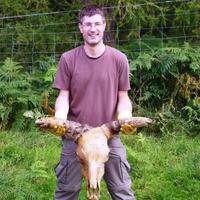


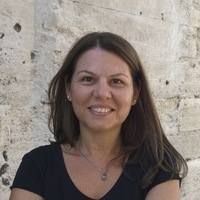






Uploads
Papers by Anna Kjellström
The results of the investigation are discussed along the three areas within which new and important knowledge has been gained:
• Human lives – Skeletons and burnt bones. The conditions of people’s lives, health and diet are studied.
• Aristocratic environments – The large mound and the rune stone are discussed to highlight social structures in the Uppsala area during the Late Iron Age.
• Religious conversion – Rituals in an era of change. The long period of use provides an opportunity to generate new and relevant knowledge about burial rituals and the Christian conversion progress, as well as testing currently held views on the conversion in the region.